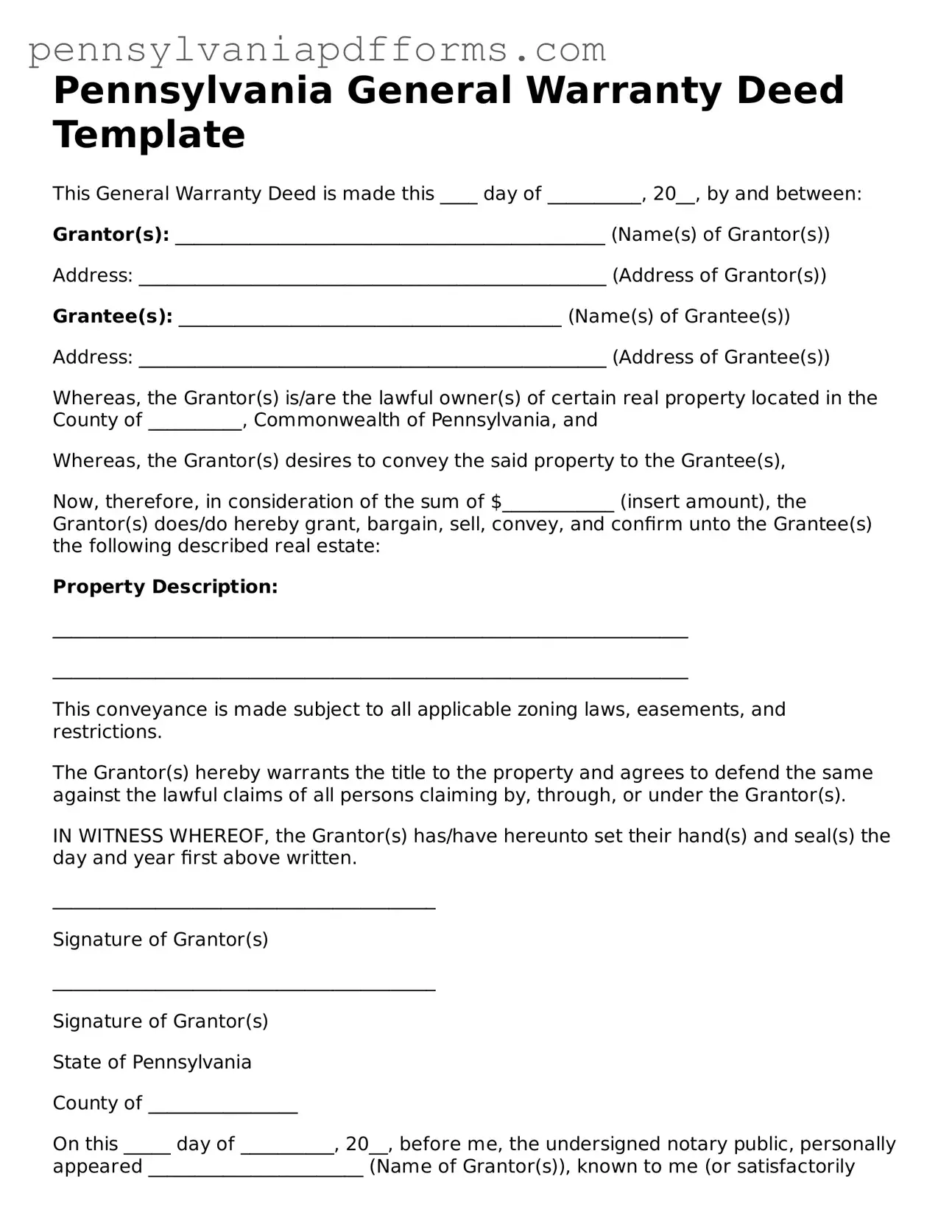Pennsylvania General Warranty Deed Template
This General Warranty Deed is made this ____ day of __________, 20__, by and between:
Grantor(s): ______________________________________________ (Name(s) of Grantor(s))
Address: __________________________________________________ (Address of Grantor(s))
Grantee(s): _________________________________________ (Name(s) of Grantee(s))
Address: __________________________________________________ (Address of Grantee(s))
Whereas, the Grantor(s) is/are the lawful owner(s) of certain real property located in the County of __________, Commonwealth of Pennsylvania, and
Whereas, the Grantor(s) desires to convey the said property to the Grantee(s),
Now, therefore, in consideration of the sum of $____________ (insert amount), the Grantor(s) does/do hereby grant, bargain, sell, convey, and confirm unto the Grantee(s) the following described real estate:
Property Description:
____________________________________________________________________
____________________________________________________________________
This conveyance is made subject to all applicable zoning laws, easements, and restrictions.
The Grantor(s) hereby warrants the title to the property and agrees to defend the same against the lawful claims of all persons claiming by, through, or under the Grantor(s).
IN WITNESS WHEREOF, the Grantor(s) has/have hereunto set their hand(s) and seal(s) the day and year first above written.
_________________________________________
Signature of Grantor(s)
_________________________________________
Signature of Grantor(s)
State of Pennsylvania
County of ________________
On this _____ day of __________, 20__, before me, the undersigned notary public, personally appeared _______________________ (Name of Grantor(s)), known to me (or satisfactorily proven) to be the person(s) whose name(s) is/are subscribed to the within instrument, and acknowledged that he/she/they executed the same for the purposes therein contained.
In witness whereof, I hereunto set my hand and official seal.
_________________________________________
Notary Public
My commission expires: ________________
